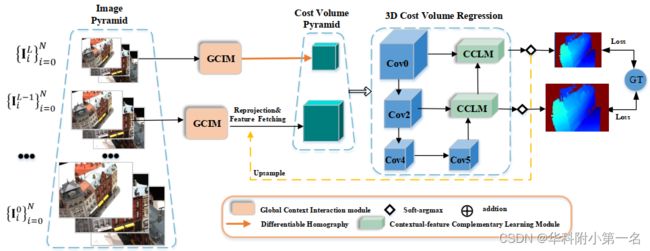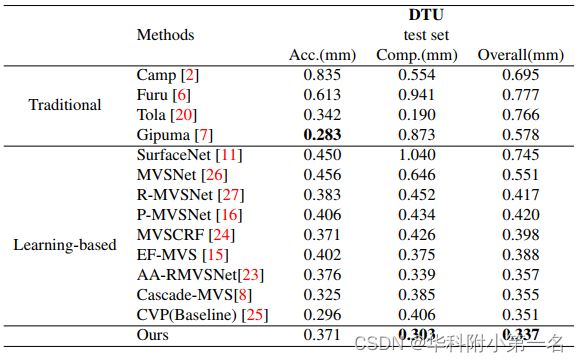- ASSERT函数
weixin_34194359
php
assert宏的原型定义在中,其作用是假设它的条件返回错误,则终止程序运行,原型定义:#includevoidassert(intexpression);assert的作用是现计算表达式expression,假设其值为假(即为0),那么它先向stderr打印一条出错信息,然后通过调用abort来终止程序执行。http://www.chongtang.me/index.php/1419提高程序健壮性
- 大模型时代的知识焦虑
机载软件与适航
机器学习-建模算法-代理模型人工智能大数据
引言:浪潮之巅,焦虑暗涌大模型时代已经浩荡而来,如同奔腾的浪潮,以令人惊叹的速度重塑着世界的面貌。从智能客服的温声细语,到AI绘画的妙笔生花,再到自动驾驶的日趋成熟,大型语言模型、图像模型等人工智能技术以前所未有的姿态,渗透进我们生活的方方面面。信息获取前所未有的便捷,知识创造空前高效,人机交互焕然一新,一个充满无限可能的智能化未来似乎触手可及。然而,在这令人眼花缭乱的技术盛景之下,一股无形的焦虑
- 【计算机系统概论】计算机框架是什么?冯诺依曼架构为什么重要?我们要记住冯·诺依曼架构的什么?
爱吃羊的老虎
计算机系统架构系统架构计算机网络
什么是计算机的框架?计算机的框架(架构)就是计算机工作的基本规则,规定了它如何存储数据、如何执行指令、如何传输信息。可以理解成是计算机的大脑结构,它决定了一台计算机的工作方式。如果把计算机比作一个工厂,那么架构就像是生产流程,比如:存储区(仓库):存放数据和指令。控制中心(调度室):决定接下来做什么。加工车间(计算单元):执行计算和逻辑处理。运输系统(总线):负责不同部件之间的信息传输。冯·诺依曼
- oracle当前耗时sql语句,查看Oracle最耗时的SQL
weixin_39846553
oracle当前耗时sql语句
有很多种方法可以用来找出哪些sql语句需要优化,但是很久以来,最简单的方法都是分析保存在V$sql视图中的缓存的sql信息。通过V$sql视图,可以确定具有高消耗时间、CUP和IO读取的sql语句。1.查看总消耗时间最多的前10条sql语句select*from(selectv.sql_id,v.child_number,v.sql_text,last_load_time,v.PARSING_US
- 某智慧医养服务平台Uploads存在任意文件上传漏洞(DVB-2025-8968)
Byp0ss403
漏洞复现集合文件上传web安全
免责声明本文所描述的漏洞及其复现步骤仅供网络安全研究与教育目的使用。任何人不得将本文提供的信息用于非法目的或未经授权的系统测试。作者不对任何由于使用本文信息而导致的直接或间接损害承担责任。如涉及侵权,请及时与我们联系,我们将尽快处理并删除相关内容。0x01产品介绍广西金中软件集团有限公司前身成立于1999年,隶属于广西电信下的三产公司金中信息产业有限公司,是一家集软件开发、网站建设、网络工程、系统
- 怎么看股指期货多空单数量?
财财有个期权懂
金融财经
查看期货多空持仓量是投资者判断市场走势、制定投资策略的重要依据。股指期货多空单数据股指期货的多空单数据是可以查询到的,老板们可以通过自己使用的期货公司交易软件,或者是交易所官网,或者金融网站都可以可能到的。首先是期货公司的交易软件,一般来说交易软件上面都会有多空单的信息,老板们只需要登录软件,进入股指期货的页面,然后选择要看的合约,接着选择多空持仓选项就可以看到股指期货的多空持仓情况。其次就是交易
- 从需求文档到测试用例的转化方法论
测试渣
测试用例
在当今快速发展的软件行业中,软件质量的高低直接关系到企业的市场竞争力和用户体验。作为软件质量保障的关键环节,测试用例的设计与实施起着至关重要的作用。而测试用例的设计,又是以需求文档为依据的。因此,如何从需求文档中准确、全面地提取信息,并转化为有效的测试用例,成为了测试团队面临的重要挑战。本文将从需求文档的特点、测试用例设计的原则和方法,以及二者之间的转化流程等方面,详细阐述从需求文档到测试用例的转
- 【从零开始学习计算机科学】信息安全(十三)区块链
贫苦游商
学习区块链hash公有链私有链信息安全网络安全
【从零开始学习计算机科学】信息安全(十三)区块链区块链区块链概述区块链的主要特性开放,共识交易透明,双方匿名不可篡改,可追溯区块链的主要类别公有链私有链联盟链区块链核心技术Hash指针Merkle(梅根)树SPV交易验证过程区块链网络分叉解决机制51%攻击问题基于比特币的区块链的优势与不足常用的区块链区块链区块链概述能否在互联网环境(开放环境)下,创造一种技术,使得在无法保证人们相互信任的前提下,
- 数学领域的跨时代进化与升级:从公理化到智能化的破茧之路
夏末之花
算法
作者:夏末之花|发布时间:2025-03-16|阅读量:10万+|点赞数:5.6万引言:数学的“破茧时刻”与文明跃迁人类历史上,数学的每一次重大突破都像一次“破茧时刻”,推动文明跨越式发展。从古希腊的几何公理化到牛顿的微积分,再到20世纪的计算机理论,数学始终是科学革命的基石。而在21世纪的今天,随着量子计算、人工智能、生物信息等技术的爆发,数学正迎来新一轮的进化与升级——从纯粹的逻辑工具,演变为
- 华为余承东“剧透”新形态手机;自DeepSeek发布以来,英伟达市值已蒸发4200亿美元;Java 24正式发布 | 极客头条
极客日报
华为智能手机java
「极客头条」——技术人员的新闻圈!CSDN的读者朋友们好,「极客头条」来啦,快来看今天都有哪些值得我们技术人关注的重要新闻吧。整理|郑丽媛出品|CSDN(ID:CSDNnews)一分钟速览新闻点!华为余承东“揭秘”新形态手机:不是卷轴屏/伸缩屏,但男生女生都会喜欢腾讯去年营收增长8%,马化腾:重组AI团队,增加AI相关的资本开支金山办公:2024年WPSOffice全球月度活跃设备数达6.32亿,
- Linux常用命令与权限理解总结 续篇
小白要加油努力
Linuxlinux运维服务器
接着前文(Linux常用命令与权限理解总结-CSDN博客)来继续说明一些常见的指令。5.进程管理详解ps-显示进程状态ps命令用于显示当前运行的进程信息。详细用法:ps:显示当前终端的进程ps-e或ps-A:显示所有进程ps-f:全格式列表ps-ef:显示所有进程的完整格式ps-uusername:显示指定用户的进程ps-aux:BSD风格显示所有进程详情ps-axjf:树状结构显示进程(显示父子
- Python赋能区块链溯源系统:从技术实现到应用落地
Echo_Wish
Python!实战!python区块链开发语言
Python赋能区块链溯源系统:从技术实现到应用落地在供应链管理、食品安全、药品追踪等多个领域,产品的来源和流通过程正成为消费者和企业关注的重点。传统溯源系统往往缺乏数据透明性和不可篡改性,而区块链技术的引入解决了这些痛点,将溯源信息永久记录在分布式账本上,实现全流程可追溯。那么问题来了:如何用Python这把“瑞士军刀”构建一个高效的区块链溯源系统?本文将围绕这一主题,深入探讨Python在区块
- 新浪财经App喜娜AI助手通过大模型登记,已上线AI摘要和个股公告AI解读
量子位
3月14日,官方发布的信息显示,新浪财经App喜娜AI助手近日已通过北京市生成式人工智能服务登记。目前,喜娜AI助手已上线两项创新功能:喜娜AI摘要和个股公告AI解读。这两项功能旨在通过先进的人工智能技术,提升用户对财经资讯和上市公司公告的理解与分析效率,这标志着AI技术在信息服务领域的又一重大突破。喜娜AI摘要:快速提炼财经资讯核心要点AI时代,资讯信息迎来爆炸性增长,用户每天都要面对海量资讯,
- Demo发布 | ClkLog成功集成Unity3D
前言在Clklog完成ReactNative和uni-app集成Demo后,一个游戏行业新客户提出了使用Unity3D开发的集成问题。对此,我们与客户分别进行了测试。客户使用神策Andriod原生SDK在Android端暴露接口给Unity3D的方式,验证了使用ClkLog进行数据采集的可行性。同时,ClkLog联合合作伙伴对神策Unity3DSDK(安卓端、IOS端、MacOS)进行了深入测试,
- duxapp放弃了redux,在duxapp中局部、全局状态的实现方案
全局状态全局状态是一个很实用的功能,例如管理用户信息,组件间状态共享等功能都需要用到全局状态,react有很多成熟的全局状态管理工具,但是很多写起来太过麻烦,duxapp提供了几种应对不同场景的全局状态的方案,当然如果你需要其他全局状态,可以自行集成局部全局状态这种全局状态方案的使用场景,在于父子组件之间的状态共享import{contextState}from'@/duxapp'import{T
- Axure高级功能深度解析一一高效原型设计的利器
招风的黑耳
Axure
Axure作为一款专业的原型设计工具,凭借其强大的功能和灵活的交互设计,成为了众多设计师和开发者的首选。本文将深入探讨Axure的高级功能,帮助大家更好地利用这款工具,提升原型设计的效率和质量。一、Axure高级功能概览•变量管理:介绍局部变量和全局变量的使用场景、命名规则以及如何在原型设计中实现数据传递和交互逻辑。•动态面板:详细解析动态面板的工作原理,包括如何创建、编辑和管理动态面板状态,以及
- RabbitMQ 集群降配
Hover_Z_快跑
rabbitmq分布式
这里写自定义目录标题摘要检查状态1.检查RabbitMQ服务状态2.检查RabbitMQ端口监听3.检查RabbitMQ管理插件是否启用4.检查开机自启状态5.确认集群高可用性6.检查使用该集群的服务是否做了断开重连实操1.负载均衡配置2.逐个节点降配(滚动操作)2.1停止RabbitMQ服务2.2调整ECS配置2.3恢复节点并重新加入集群2.4恢复负载均衡流量3.全局监控与验证4.降配后优化(可
- 加密算法的性能优化与安全性平衡研究
sigen520520
笔记
摘要在数字化信息飞速发展的当下,数据安全至关重要,加密算法作为数据保护的核心手段,其性能与安全性直接关乎信息系统的稳定运行。本文深入剖析常见加密算法,详细分析其性能指标与安全性特点,全面探讨在提升加密速度的同时确保安全的有效方法与实践,旨在为构建高效、安全的加密体系提供理论支撑与实践指导。引言随着互联网的普及和信息技术的广泛应用,数据在传输与存储过程中面临诸多安全威胁,如数据泄露、篡改、伪造等。加
- k8s 配置私有镜像仓库认证
狗贤
Kuberneteskubernetes容器
1.创建Docker注册表的Secret首先,创建一个类型为dockerconfigjson的Secret,用于存储Docker注册表的认证信息。方法1:使用DockerCLI和kubectl不适用于阿里云格式不一样登录Docker注册表:dockerlogin这会生成一个包含认证信息的配置文件,通常位于~/.docker/config.json。创建Secret:kubectl-npromcre
- centOS7使用yum安装报错的解决办法
小泊客
lLinux学习开发语言linux运维ssh网络运维开发
一、错误提示信息:[root@localhost/]#sudoyuminstallbash-completionCouldnotretrievemirrorlisthttp://mirrorlist.centos.org/?release=7&arch=x86_64&repo=os&infra=stockerrorwas14:curl#7-"Failedtoconnectto2a05:d012:8
- 【RabbitMQ】RabbitMQ如何保证消息不丢失?
熏鱼的小迷弟Liu
中间件rabbitmq分布式
为了保证消息不丢失,需要在生产者、RabbitMQ本身和消费者三个环节采取相应措施。1.生产者端:确保消息发送成功1.1开启消息确认机制(PublisherConfirms)原理:生产者发送消息后,RabbitMQ会返回一个确认(ACK),表示消息已成功接收。1.2开启事务机制(Transactions)原理:生产者发送信息后,可以通过事务机制确保信息被成功接收。注意:事务机制性能较低,推荐消息确
- 华为仓颉编程语言与医疗领域的深度融合:技术与实践
想成为高手499
华为人工智能服务器
引言在数字化浪潮席卷全球的背景下,医疗行业的智能化转型已成为一种不可逆的趋势。从电子病历(EMR)、医疗影像分析,到远程手术和个性化健康管理,技术创新正在不断推动医疗领域的变革。然而,这一过程对底层技术提出了更高的要求:高效的计算性能、强大的硬件适配性、分布式计算能力以及生态系统的支持。华为推出的自研编程语言仓颉(Cangjie)正是在此背景下应运而生。仓颉语言以其高效、灵活和强大的硬件整合能力,
- 当现代教育技术遇上仓颉---探秘华为仓颉编程语言与未来教育技术的接轨
想成为高手499
华为服务器php
引言随着人工智能、物联网、区块链等新兴技术的发展,编程语言的需求也在不断演化。据市场研究机构发布的数据显示,全球编程语言市场规模预计在未来五年内将以每年10%的速度增长。此外,越来越多的企业和高校正在积极推动基于分布式系统和硬件优化的新型语言开发,这进一步表明对高性能编程语言的需求日益旺盛。近年来,华为推出了自研编程语言“仓颉”,以其高效的语法设计、灵活的语义表达能力和强大的跨平台适配性能引发了编
- 用LangChain构建自愈式生成式AI:颠覆传统知识库的智能问答系统实战
煜bart
机器人人工智能pythonAI编程
引言:当生成式AI遇到自进化架构ChatGPT的惊艳表现让企业意识到生成式AI的潜力,但传统问答系统仍面临数据孤岛、知识更新滞后等痛点。本文将揭秘如何通过LangChain框架构建具有自进化能力的智能问答系统,实现企业知识库的实时动态更新与智能推理。通过本文,您将掌握一套让AI系统在运行中持续学习、自主优化的创新架构。---##一、核心技术突破###1.1自愈式数据管道(Self-healingP
- nginx性能优化有哪些方式?
企鹅侠客
linux面试nginx性能优化php
0.运维干货分享软考高级系统架构设计师备考学习资料软考高级网络规划设计师备考学习资料KubernetesCKA认证学习资料分享信息安全管理体系(ISMS)制度模板分享免费文档翻译工具(支持word、pdf、ppt、excel)PuTTY中文版安装包MobaXterm中文版安装包pinginfoview网络诊断工具中文版Nginx是一个高性能的HTTP服务器和反向代理服务器,但在高并发场景下,仍然有
- 使用码云搭建CocoaPods远程私有库
倾云鹤
IOScocoapodsxcodeios
一、创建远程私有索引库用来存放私有框架的详细描述信息.podspec文件1.创建私有库假设码云上创建的私有库为repo-spec2.查看本地已存在的索引库podrepolist3.将远程私有索引库添加到本地podrepoadd[https://gitee.com/jingluoguo/repo-spec.git](https://gitee.com/lsapp_dev/repo-spec.git)
- 基于STM32的儿童误锁车内远程报警系统(华为云IOT)
DS小龙哥
智能家居与物联网项目实战stm32嵌入式硬件单片机华为云
一、项目背景汽车发展历史汽车自上个世纪末诞生以来,已经走过了风风雨雨的一百多年。汽车经过百年历史的演变,已经在世界各地获得广泛的普及和应用,但是事物总会具有两面性,汽车方便了人们生活的同时也带来了不安全的因素。儿童的出行和乘车安全始终都是我国现代汽车安全技术研究的主要方向。随着乘车安全的普及,在一定程度上提高了公众对于自家孩子乘车的安全意识,许多家长都在后座配置了儿童座椅。但是仍无法避免儿童误锁车
- BigemapPro 图斑名称自定义修改全攻略
Bigemap软件
软件需求信息可视化
在地图制作中,图斑名称的显示和修改是一个常见但重要的任务。今天,我们就来详细讲解如何使用BigemapPro自定义修改图斑名称,并通过字段信息组合显示它的名称,让你的地图更加专业和直观!在完成图斑绘制后,若想让图斑名称即刻显示在地图上,操作非常简便。只需选中图层文件夹,点击鼠标右键,选择【显示图元名称】选项,图斑名称便会迅速出现在地图对应位置,帮助我们快速识别各个图斑。一、单个图斑名称修改手动修改
- 疯狂python讲义学习日志06——异常处理
静笃归心方得平和心气
Python学习日志异常处理python学习python笔记python速成
疯狂python讲义学习日志06——异常处理引言1异常处理机制1.1使用try...except处理异常1.2异常类的继承体系1.3多异常捕获1.4访问异常信息1.5else块1.6使用finally回收资源2使用raise处理异常2.1引发异常2.2自定义异常类2.3except和raise同时使用3.python的异常传播轨迹4.异常处理规则4.1不要过度使用异常4.2不要忽略异常引言异常机制
- 代理IP防“开盒”?技术人实测后的真相与防护指南
小白iP代理
tcp/ip网络系统安全
近年来“开盒”攻击事件频发,最近更是暴出百度副总裁12岁女儿”开盒“他人。技术人该如何保护隐私?本文从代理IP的原理出发,结合实测数据与攻防案例,分析代理技术的真实作用与局限,并提供一套可落地的防护方案。一、什么是“开盒”攻击?“开盒”(Doxxing)是一种通过技术手段挖掘并公开他人隐私信息的网络暴力行为,常见攻击路径包括:IP追踪:通过社交平台、游戏服务器等获取目标IP地址数据关联:利用社工库
- java解析APK
3213213333332132
javaapklinux解析APK
解析apk有两种方法
1、结合安卓提供apktool工具,用java执行cmd解析命令获取apk信息
2、利用相关jar包里的集成方法解析apk
这里只给出第二种方法,因为第一种方法在linux服务器下会出现不在控制范围之内的结果。
public class ApkUtil
{
/**
* 日志对象
*/
private static Logger
- nginx自定义ip访问N种方法
ronin47
nginx 禁止ip访问
因业务需要,禁止一部分内网访问接口, 由于前端架了F5,直接用deny或allow是不行的,这是因为直接获取的前端F5的地址。
所以开始思考有哪些主案可以实现这样的需求,目前可实施的是三种:
一:把ip段放在redis里,写一段lua
二:利用geo传递变量,写一段
- mysql timestamp类型字段的CURRENT_TIMESTAMP与ON UPDATE CURRENT_TIMESTAMP属性
dcj3sjt126com
mysql
timestamp有两个属性,分别是CURRENT_TIMESTAMP 和ON UPDATE CURRENT_TIMESTAMP两种,使用情况分别如下:
1.
CURRENT_TIMESTAMP
当要向数据库执行insert操作时,如果有个timestamp字段属性设为
CURRENT_TIMESTAMP,则无论这
- struts2+spring+hibernate分页显示
171815164
Hibernate
分页显示一直是web开发中一大烦琐的难题,传统的网页设计只在一个JSP或者ASP页面中书写所有关于数据库操作的代码,那样做分页可能简单一点,但当把网站分层开发后,分页就比较困难了,下面是我做Spring+Hibernate+Struts2项目时设计的分页代码,与大家分享交流。
1、DAO层接口的设计,在MemberDao接口中定义了如下两个方法:
public in
- 构建自己的Wrapper应用
g21121
rap
我们已经了解Wrapper的目录结构,下面可是正式利用Wrapper来包装我们自己的应用,这里假设Wrapper的安装目录为:/usr/local/wrapper。
首先,创建项目应用
&nb
- [简单]工作记录_多线程相关
53873039oycg
多线程
最近遇到多线程的问题,原来使用异步请求多个接口(n*3次请求) 方案一 使用多线程一次返回数据,最开始是使用5个线程,一个线程顺序请求3个接口,超时终止返回 缺点 测试发现必须3个接
- 调试jdk中的源码,查看jdk局部变量
程序员是怎么炼成的
jdk 源码
转自:http://www.douban.com/note/211369821/
学习jdk源码时使用--
学习java最好的办法就是看jdk源代码,面对浩瀚的jdk(光源码就有40M多,比一个大型网站的源码都多)从何入手呢,要是能单步调试跟进到jdk源码里并且能查看其中的局部变量最好了。
可惜的是sun提供的jdk并不能查看运行中的局部变量
- Oracle RAC Failover 详解
aijuans
oracle
Oracle RAC 同时具备HA(High Availiablity) 和LB(LoadBalance). 而其高可用性的基础就是Failover(故障转移). 它指集群中任何一个节点的故障都不会影响用户的使用,连接到故障节点的用户会被自动转移到健康节点,从用户感受而言, 是感觉不到这种切换。
Oracle 10g RAC 的Failover 可以分为3种:
1. Client-Si
- form表单提交数据编码方式及tomcat的接受编码方式
antonyup_2006
JavaScripttomcat浏览器互联网servlet
原帖地址:http://www.iteye.com/topic/266705
form有2中方法把数据提交给服务器,get和post,分别说下吧。
(一)get提交
1.首先说下客户端(浏览器)的form表单用get方法是如何将数据编码后提交给服务器端的吧。
对于get方法来说,都是把数据串联在请求的url后面作为参数,如:http://localhost:
- JS初学者必知的基础
百合不是茶
js函数js入门基础
JavaScript是网页的交互语言,实现网页的各种效果,
JavaScript 是世界上最流行的脚本语言。
JavaScript 是属于 web 的语言,它适用于 PC、笔记本电脑、平板电脑和移动电话。
JavaScript 被设计为向 HTML 页面增加交互性。
许多 HTML 开发者都不是程序员,但是 JavaScript 却拥有非常简单的语法。几乎每个人都有能力将小的
- iBatis的分页分析与详解
bijian1013
javaibatis
分页是操作数据库型系统常遇到的问题。分页实现方法很多,但效率的差异就很大了。iBatis是通过什么方式来实现这个分页的了。查看它的实现部分,发现返回的PaginatedList实际上是个接口,实现这个接口的是PaginatedDataList类的对象,查看PaginatedDataList类发现,每次翻页的时候最
- 精通Oracle10编程SQL(15)使用对象类型
bijian1013
oracle数据库plsql
/*
*使用对象类型
*/
--建立和使用简单对象类型
--对象类型包括对象类型规范和对象类型体两部分。
--建立和使用不包含任何方法的对象类型
CREATE OR REPLACE TYPE person_typ1 as OBJECT(
name varchar2(10),gender varchar2(4),birthdate date
);
drop type p
- 【Linux命令二】文本处理命令awk
bit1129
linux命令
awk是Linux用来进行文本处理的命令,在日常工作中,广泛应用于日志分析。awk是一门解释型编程语言,包含变量,数组,循环控制结构,条件控制结构等。它的语法采用类C语言的语法。
awk命令用来做什么?
1.awk适用于具有一定结构的文本行,对其中的列进行提取信息
2.awk可以把当前正在处理的文本行提交给Linux的其它命令处理,然后把直接结构返回给awk
3.awk实际工
- JAVA(ssh2框架)+Flex实现权限控制方案分析
白糖_
java
目前项目使用的是Struts2+Hibernate+Spring的架构模式,目前已经有一套针对SSH2的权限系统,运行良好。但是项目有了新需求:在目前系统的基础上使用Flex逐步取代JSP,在取代JSP过程中可能存在Flex与JSP并存的情况,所以权限系统需要进行修改。
【SSH2权限系统的实现机制】
权限控制分为页面和后台两块:不同类型用户的帐号分配的访问权限是不同的,用户使
- angular.forEach
boyitech
AngularJSAngularJS APIangular.forEach
angular.forEach 描述: 循环对obj对象的每个元素调用iterator, obj对象可以是一个Object或一个Array. Iterator函数调用方法: iterator(value, key, obj), 其中obj是被迭代对象,key是obj的property key或者是数组的index,value就是相应的值啦. (此函数不能够迭代继承的属性.)
- java-谷歌面试题-给定一个排序数组,如何构造一个二叉排序树
bylijinnan
二叉排序树
import java.util.LinkedList;
public class CreateBSTfromSortedArray {
/**
* 题目:给定一个排序数组,如何构造一个二叉排序树
* 递归
*/
public static void main(String[] args) {
int[] data = { 1, 2, 3, 4,
- action执行2次
Chen.H
JavaScriptjspXHTMLcssWebwork
xwork 写道 <action name="userTypeAction"
class="com.ekangcount.website.system.view.action.UserTypeAction">
<result name="ssss" type="dispatcher">
- [时空与能量]逆转时空需要消耗大量能源
comsci
能源
无论如何,人类始终都想摆脱时间和空间的限制....但是受到质量与能量关系的限制,我们人类在目前和今后很长一段时间内,都无法获得大量廉价的能源来进行时空跨越.....
在进行时空穿梭的实验中,消耗超大规模的能源是必然
- oracle的正则表达式(regular expression)详细介绍
daizj
oracle正则表达式
正则表达式是很多编程语言中都有的。可惜oracle8i、oracle9i中一直迟迟不肯加入,好在oracle10g中终于增加了期盼已久的正则表达式功能。你可以在oracle10g中使用正则表达式肆意地匹配你想匹配的任何字符串了。
正则表达式中常用到的元数据(metacharacter)如下:
^ 匹配字符串的开头位置。
$ 匹配支付传的结尾位置。
*
- 报表工具与报表性能的关系
datamachine
报表工具birt报表性能润乾报表
在选择报表工具时,性能一直是用户关心的指标,但是,报表工具的性能和整个报表系统的性能有多大关系呢?
要回答这个问题,首先要分析一下报表的处理过程包含哪些环节,哪些环节容易出现性能瓶颈,如何优化这些环节。
一、报表处理的一般过程分析
1、用户选择报表输入参数后,报表引擎会根据报表模板和输入参数来解析报表,并将数据计算和读取请求以SQL的方式发送给数据库。
2、
- 初一上学期难记忆单词背诵第一课
dcj3sjt126com
wordenglish
what 什么
your 你
name 名字
my 我的
am 是
one 一
two 二
three 三
four 四
five 五
class 班级,课
six 六
seven 七
eight 八
nince 九
ten 十
zero 零
how 怎样
old 老的
eleven 十一
twelve 十二
thirteen
- 我学过和准备学的各种技术
dcj3sjt126com
技术
语言VB https://msdn.microsoft.com/zh-cn/library/2x7h1hfk.aspxJava http://docs.oracle.com/javase/8/C# https://msdn.microsoft.com/library/vstudioPHP http://php.net/manual/en/Html
- struts2中token防止重复提交表单
蕃薯耀
重复提交表单struts2中token
struts2中token防止重复提交表单
>>>>>>>>>>>>>>>>>>>>>>>>>>>>>>>>>>
蕃薯耀 2015年7月12日 11:52:32 星期日
ht
- 线性查找二维数组
hao3100590
二维数组
1.算法描述
有序(行有序,列有序,且每行从左至右递增,列从上至下递增)二维数组查找,要求复杂度O(n)
2.使用到的相关知识:
结构体定义和使用,二维数组传递(http://blog.csdn.net/yzhhmhm/article/details/2045816)
3.使用数组名传递
这个的不便之处很明显,一旦确定就是不能设置列值
//使
- spring security 3中推荐使用BCrypt算法加密密码
jackyrong
Spring Security
spring security 3中推荐使用BCrypt算法加密密码了,以前使用的是md5,
Md5PasswordEncoder 和 ShaPasswordEncoder,现在不推荐了,推荐用bcrpt
Bcrpt中的salt可以是随机的,比如:
int i = 0;
while (i < 10) {
String password = "1234
- 学习编程并不难,做到以下几点即可!
lampcy
javahtml编程语言
不论你是想自己设计游戏,还是开发iPhone或安卓手机上的应用,还是仅仅为了娱乐,学习编程语言都是一条必经之路。编程语言种类繁多,用途各 异,然而一旦掌握其中之一,其他的也就迎刃而解。作为初学者,你可能要先从Java或HTML开始学,一旦掌握了一门编程语言,你就发挥无穷的想象,开发 各种神奇的软件啦。
1、确定目标
学习编程语言既充满乐趣,又充满挑战。有些花费多年时间学习一门编程语言的大学生到
- 架构师之mysql----------------用group+inner join,left join ,right join 查重复数据(替代in)
nannan408
right join
1.前言。
如题。
2.代码
(1)单表查重复数据,根据a分组
SELECT m.a,m.b, INNER JOIN (select a,b,COUNT(*) AS rank FROM test.`A` A GROUP BY a HAVING rank>1 )k ON m.a=k.a
(2)多表查询 ,
使用改为le
- jQuery选择器小结 VS 节点查找(附css的一些东西)
Everyday都不同
jquerycssname选择器追加元素查找节点
最近做前端页面,频繁用到一些jQuery的选择器,所以特意来总结一下:
测试页面:
<html>
<head>
<script src="jquery-1.7.2.min.js"></script>
<script>
/*$(function() {
$(documen
- 关于EXT
tntxia
ext
ExtJS是一个很不错的Ajax框架,可以用来开发带有华丽外观的富客户端应用,使得我们的b/s应用更加具有活力及生命力。ExtJS是一个用 javascript编写,与后台技术无关的前端ajax框架。因此,可以把ExtJS用在.Net、Java、Php等各种开发语言开发的应用中。
ExtJs最开始基于YUI技术,由开发人员Jack
- 一个MIT计算机博士对数学的思考
xjnine
Math
在过去的一年中,我一直在数学的海洋中游荡,research进展不多,对于数学世界的阅历算是有了一些长进。为什么要深入数学的世界?作为计算机的学生,我没有任何企图要成为一个数学家。我学习数学的目的,是要想爬上巨人的肩膀,希望站在更高的高度,能把我自己研究的东西看得更深广一些。说起来,我在刚来这个学校的时候,并没有预料到我将会有一个深入数学的旅程。我的导师最初希望我去做的题目,是对appe






